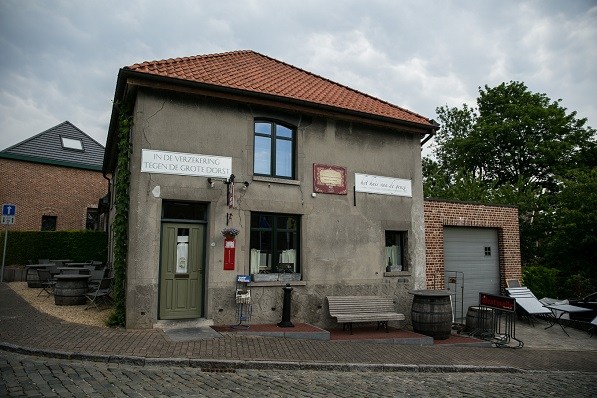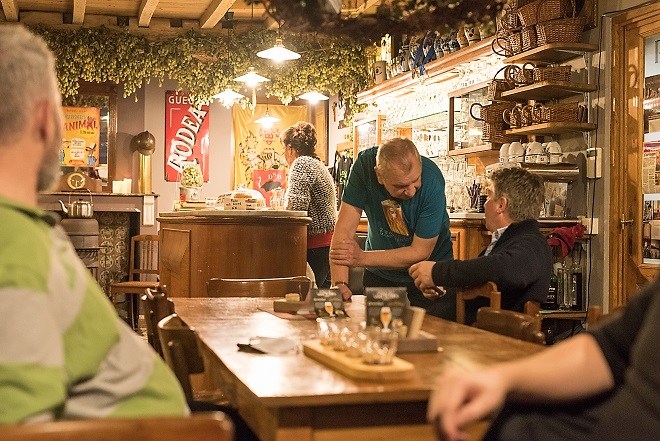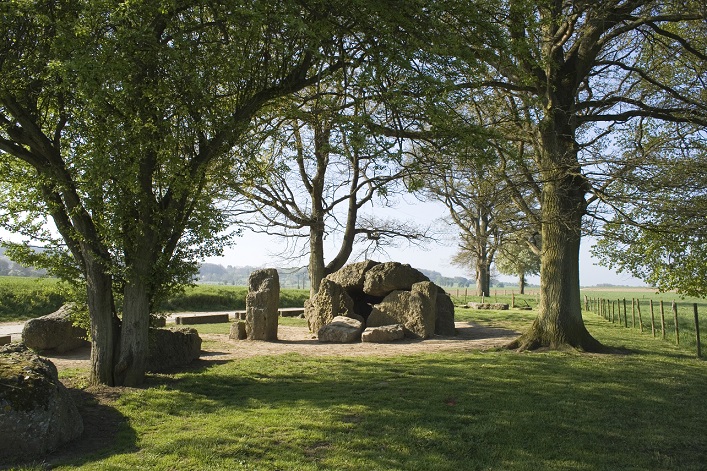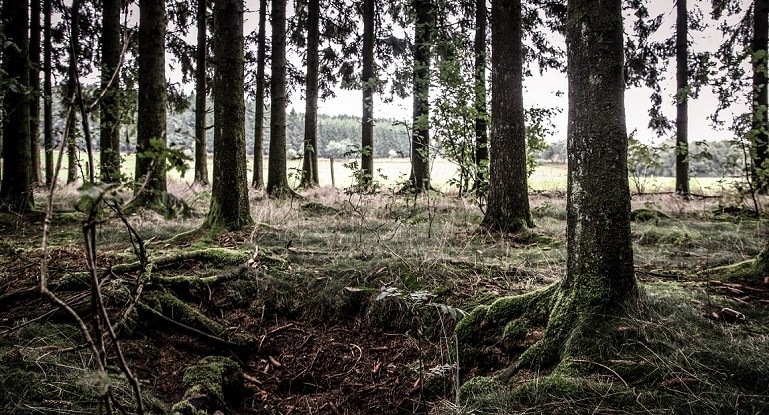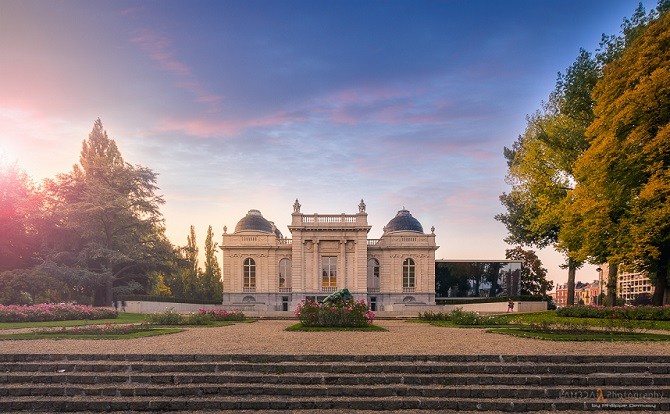Best-selling author Derek Blyth takes you to some places you might never have heard about, in a country almost no one knows.
The world’s best bar
IN DE VERZEKERING TEGEN DE GROTE DORST
No one could really believe it in 2016 when In de Verzekering Tegen de Grote Dorst (Insurance against a Huge Thirst) was voted the best bar in the world. It is after all just a rustic local café with cracked grey concrete walls and dusty green checked curtains in the windows.
And yet the influential beer website RateBeer put it at the top of their global ranking of bars. Not just once. But four years in a row.
The café is almost as old as the Belgian state. It dates back to 1842 when it was just one of thousands of village bars. There’s nothing trendy about it. It has an austere 1950s interior, some dusty paintings, a shared toilet for men and women, no food except bread and cheese, and no credit card machine. Maybe that’s what makes it special.
Run by two brothers and their mother, the café stocks about 250 Belgian beers, including some very rare Lambic beers produced in the local area. The owners believe their bar became famous after a group of beer tourists ended up there after their bus got lost in the rolling hills.
The one drawback is that this old village bar with the impossible name is only open for a few hours every week – on Sundays, public holidays and occasionally after a local funeral.
You might say this is annoying. Typically Belgian. Or you might decide to head straight out to the Pajottenland on a Sunday, just hoping that you don’t arrive after closing time.
Baetensstraat 45, Eizeringen
near Lennik
The Lost Fort
LIEFKENSHOEK
Built by the Dutch in 1579, the old fort at Liefkenshoek is now surrounded by monstrous oil and chemical installations. It used to be difficult to reach without a car, but Waterbus river boats now run out to the fort from the Steenplein in the heart of Antwerp.
The ferry drops off tourists and cyclists in a strange and forbidding industrial landscape. No one lives out here in the middle of nowhere apart from one family who live in the walled fort.
The original fortress dates back to 1579 when it was built, along with Fort Lillo on the opposite river bank, to protect Antwerp from the Spanish. This wasn’t enough to save the city, which was captured in 1585 after a year-long siege.
The fort was left in ruins until Napoleon decided to reconstruct it in the 18th century. The military buildings were later used as a quarantine hospital for emigrants bound for the United States, then as barracks and finally a vacation centre for military families.
The large semi-circular barracks from the Napoleonic period have been turned into a museum with rooms devoted to the different periods in Liefkenshoek’s history. The grounds have recently been planted with trees to create a protected nature reserve within the menacing industrial landscape.
There’s nowhere better to understand the massive extent of the port. Standing on the ramparts, you can see huge container ships move slowly up the river, along with the cooling towers of Doel power station and the rows of cranes that serve the container port.
But you leave all that behind you when you enter the old Flemish tavern located in the former gatehouse. When the weather is good, you can sit out on the terrace under the trees. It could be a local village bar somewhere in France. Except it lies in the middle of Europe’s second largest port.
Ketenislaan 4, Kallo
+32 (0)3 750 12 90, www.fortliefkenshoek.be
A Belgian Stonehenge
WÉRIS
Wéris is a strange village made up of old stone and half-timbered houses clustered around an ancient church. People are drawn to this lovely spot in the Ardennes by the Neolithic standing stones and dolmens out in the countryside around the village.
You can follow marked trails through fields of maize that lead to isolated standing stones, such as the impressive Dolmen d’Oppagne, which lies hidden in a hollow surrounded by four old oak trees. Another trail leads through woods to an abandoned quarry and a standing stone called the Lit du Diable which is painted white every year to drive away the devil.
Just outside the village, the restaurant La Maison de Harry Cot looks like something out of Lord of the Rings. The building is a curious mixture of twisted wooden balconies, odd staircases and unexpected details.
You might worry that the food will be equally mad, but the friendly young owners stick to serious cooking based on Belgian and French styles. Maybe not for everyone, but this is definitely one of the most unusual restaurants in the country.
The information centre Maison des Mégalithes in the village sells a useful map to the sites and there are several good restaurants where you can eat Ardennes food and drink a local craft beer.
Wéris
Luxembourg province
Traces of war
BOIS JACQUES
The area around Bastogne is dotted with relics of the Battle of the Bulge, fought in the last winter of the Second World War, including cemeteries, memorials and abandoned tanks.
Some places are well known, but the Bois Jacques is still a secret place that only a few know about. Deep within a dense pine forest, on a quiet road between the villages of Bizory and Foy, you come across unexpected traces of the war.
The most impressive relics are the remains of holes dug by American soldiers during the winter battle of 1944-45. They fought here in freezing temperatures to liberate the tiny village of Foy at the bottom of the hill.
A small monument was put up next to the road in 2015, close to the hidden foxholes, but it was recently attacked by vandals. An unmarked path to the left of the monument leads to a cluster of handmade wooden crosses planted in the forest to commemorate the soldiers of Easy Company, whose story inspired the TV series Band of Brothers. It’s a quiet, haunting spot where visitors sometimes plant little American flags beside the foxholes.
Not far away is another wood that is even less well known. Reached down a deserted road near Foy, the Peace Wood was planted in 2005 to mark the 60th anniversary of the battle. Its trees were laid out in the shape of Unesco’s symbol of a mother and child. Some have small stones next to them with names of former soldiers who have visited the site.
More recently, a cluster of 28 young trees was planted in memory of children and teachers killed in the 2012 Sandy Hook massacre.
Foy
Luxembourg province
Nine paintings the Nazis banned
LA BOVERIE
It used to be a forgotten art museum at the end of an island in the Meuse, but Liège’s La Boverie has been reborn. The impressive domed building put up for the Liège World Fair of 1905 reopened a few years ago after a long restoration.
The collection had been neglected for many years. At one time, the city council debated selling a beautiful Picasso painting to pay its debts – a bit like the Louvre selling off the Mona Lisa. But the officials finally decided to keep Picasso’s sad portrait of the Soler Family sitting down to a picnic.
The birthplace of crime writer Georges Simenon, Liège used to be dismissed as a run-down industrial city. But it is now working hard to improve its image. With the focus now on art and culture, Liège has turned its art museum into a landmark building with big windows looking out on the river and a new footbridge linking it to the stunning Liège-Guillemins station.
Built up over the centuries, the collection includes a beautiful painting of Le Havre harbour by Monet, along with works by Wiertz and Magritte. But the most interesting room contains nine modern paintings declared “degenerate art” by Hitler and sold in 1938 at an auction in Lucerne.
The museum tells the story of the three museum officials who travelled secretly to Lucerne with a budget to buy modern art. With money left over, they went on to Paris on 1 August 1939 looking for more art to boost the Liège collection. They returned to the Belgian city with their treasures – including works by Ensor, Signac, Utrillo, Van Dongen and De Vlaminck. Each one considered worthless by the Nazis.
The museum café, cleverly renamed Madame Boverie, occupies a striking domed hall furnished with old industrial benches, assorted wooden chairs and plants in black metal pots. It is the perfect spot to experience the cultural renaissance of this old European city.
Parc de la Boverie, Liège
+32 (0)4 238 55 01, www.laboverie.com
By Derek Blyth

